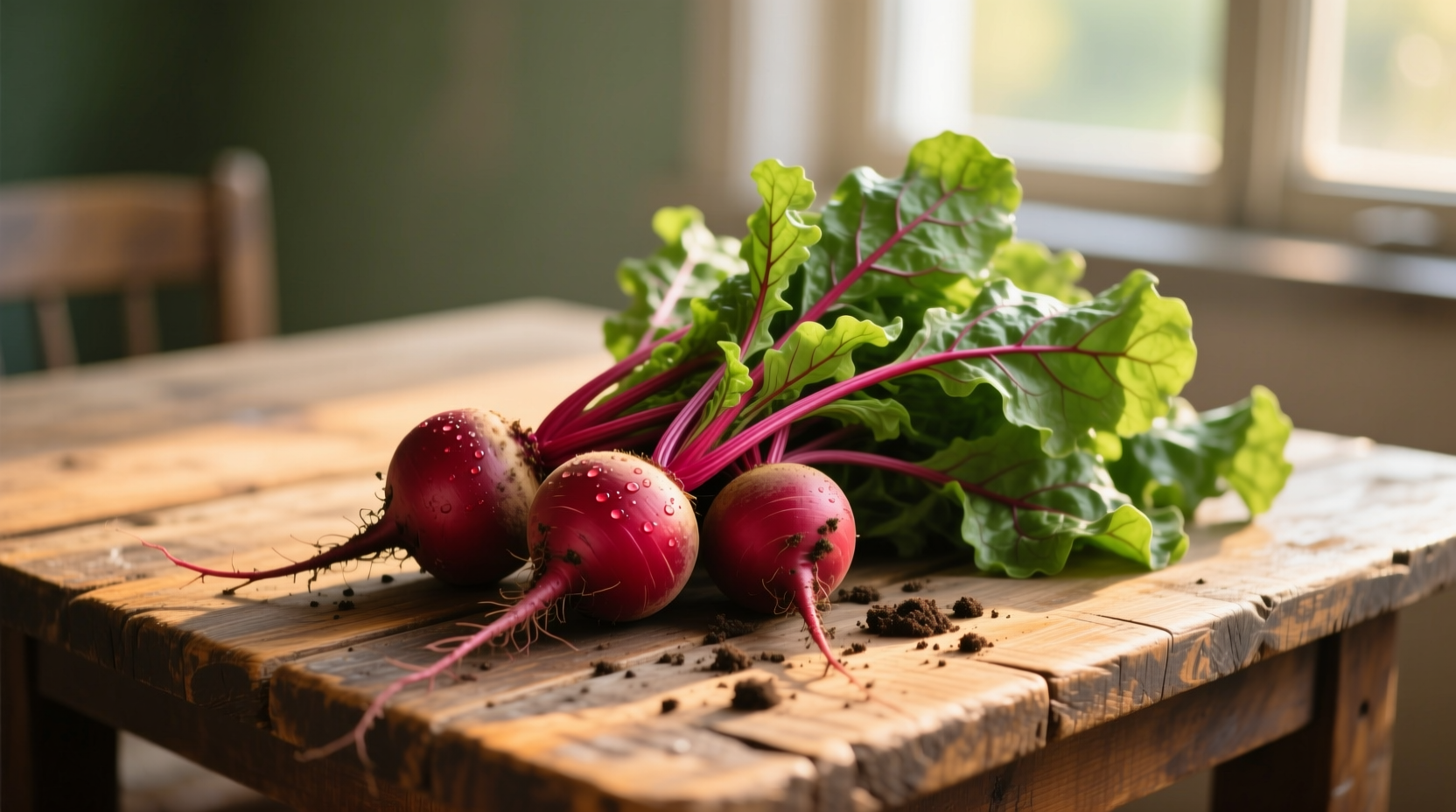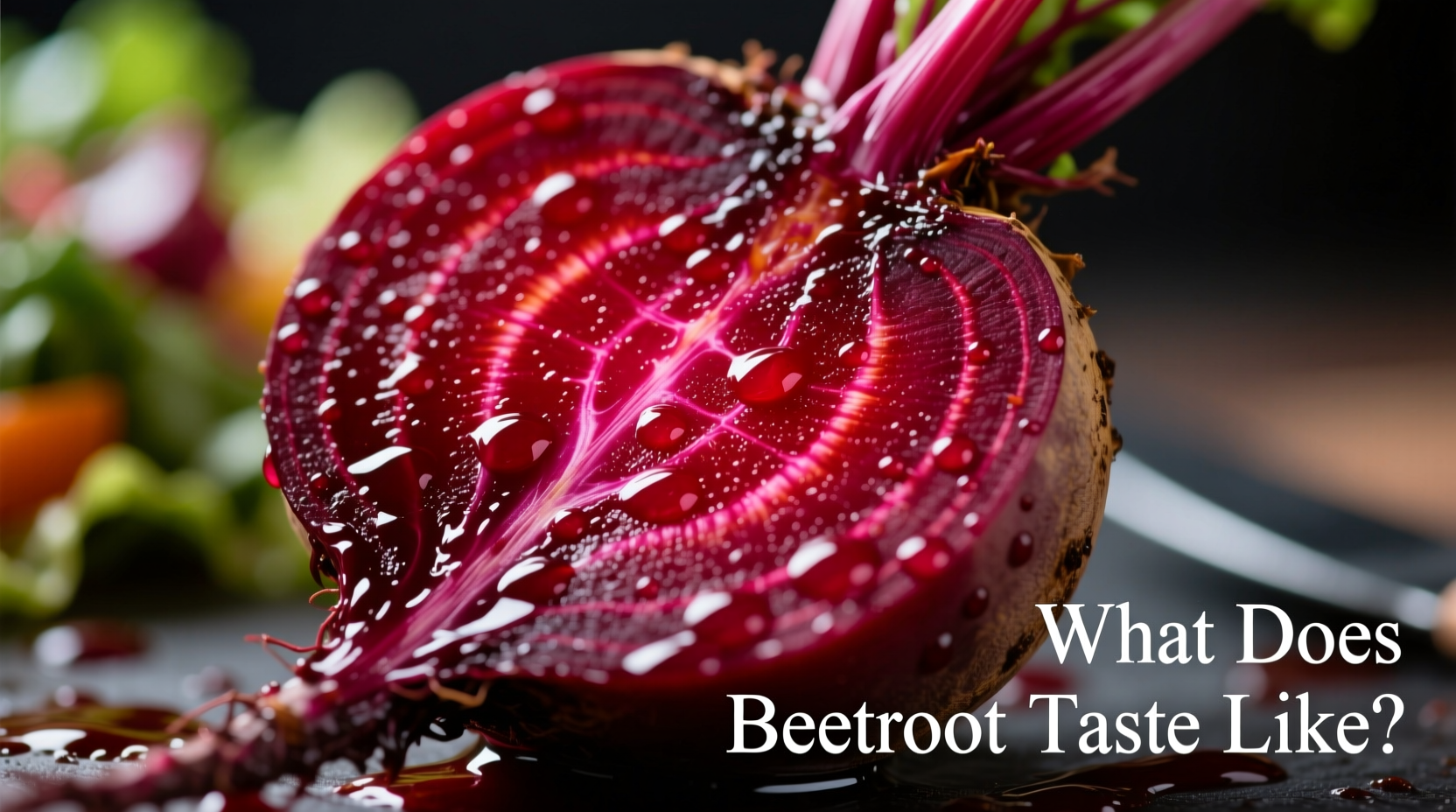Ever wondered what gives beetroots their distinctive flavor that divides opinions worldwide? Understanding beetroot's taste profile helps you appreciate this vibrant root vegetable beyond its polarizing reputation. Whether you're encountering beetroots for the first time or trying to perfect your preparation technique, knowing exactly what to expect from their flavor can transform your culinary experience.
The Science Behind Beetroot's Signature Earthy Flavor
Beetroots contain a compound called geosmin, which creates that distinctive earthy taste many describe as "dirt-like." This natural organic compound also appears in soil and contributes to the fresh smell after rain. According to research from the USDA Agricultural Research Service, geosmin concentration varies between beet varieties, explaining why some taste more earthy than others. The good news? Cooking significantly reduces geosmin levels, mellowing that intense earthiness.
Alongside earthiness, beetroots deliver natural sweetness from their high sugar content—approximately 8-10 grams per 100 grams, comparable to carrots but with a more complex flavor profile. This sweetness intensifies when beetroots are roasted or baked, creating caramelized notes that balance the earthy foundation.

Raw vs. Cooked: How Preparation Transforms Flavor
Your preparation method dramatically impacts beetroot's taste experience. Let's examine how different techniques alter the flavor profile:
| Preparation Method | Texture | Flavor Characteristics | Best For |
|---|---|---|---|
| Raw (grated/shaved) | Crisp, firm | Strong earthiness, pronounced mineral notes, refreshing bitterness | Salads, slaws, fresh preparations |
| Roasted | Tender, slightly chewy | Deep caramelized sweetness, mellow earthiness, nutty undertones | Main dishes, side dishes, grain bowls |
| Boiled | Soft, uniform | Milder sweetness, balanced earthiness, slightly watery | Traditional preparations, pickling base |
| Pickled | Firm but yielding | Tangy brightness, reduced earthiness, enhanced sweetness | Appetizers, sandwiches, cheese pairings |
Why Some People Detect a 'Dirt' Flavor (And How to Manage It)
About 10-15% of the population has heightened sensitivity to geosmin due to genetic variations in taste receptors, according to a 2022 study published in Food Quality and Preference. If you're among those who find beetroots overwhelmingly earthy, strategic preparation can help:
- Add acidity: A splash of lemon juice or vinegar balances earthiness with bright notes
- Pair with fats: Goat cheese, yogurt, or olive oil creates a smooth mouthfeel that counteracts bitterness
- Roast instead of boil: High-heat caramelization transforms natural sugars and reduces geosmin
- Combine with aromatic herbs: Dill, mint, or tarragon provide refreshing counterpoints
Interestingly, cultural context affects flavor perception. In Eastern European cuisine where beetroots feature prominently in dishes like borscht, the earthy notes are celebrated as desirable characteristics rather than flaws.
Perfect Flavor Pairings for Beetroots
Certain ingredients naturally complement beetroot's unique flavor profile. Professional chefs consistently reach for these combinations:
Citrus elements like orange segments or lemon zest cut through earthiness while enhancing natural sweetness. The vitamin C in citrus also helps preserve beetroots' vibrant color during cooking.
Goat cheese and feta provide salty tang that balances earthy notes. The fat content creates a luxurious mouthfeel that makes beetroots feel more substantial. Try crumbling cheese over roasted beets with a drizzle of honey for a classic combination.
Warm spices including cardamom, cinnamon, and cloves work surprisingly well with beetroots, especially in roasted preparations. These spices enhance the natural sweetness while adding complexity that distracts from any perceived earthiness.
Practical Tips for First-Time Beetroot Explorers
If you're new to beetroots, start with these approachable techniques that maximize enjoyment while minimizing potential flavor challenges:
- Choose smaller beetroots (2-3 inches in diameter) which tend to be sweeter and less fibrous than larger specimens
- Leave skin on during cooking to prevent color bleeding and retain maximum flavor
- Try golden beetroots which have a milder, less earthy flavor profile than traditional red varieties
- Combine with apples in salads for complementary sweetness and contrasting texture
- Add beetroots late in cooking when making soups to preserve their distinct flavor
Remember that beetroot's flavor evolves as it cooks. The transformation from raw to roasted creates entirely different culinary experiences—almost like two different vegetables. This versatility makes beetroots valuable for creative cooking when you understand how to work with their natural characteristics.











 浙公网安备
33010002000092号
浙公网安备
33010002000092号 浙B2-20120091-4
浙B2-20120091-4